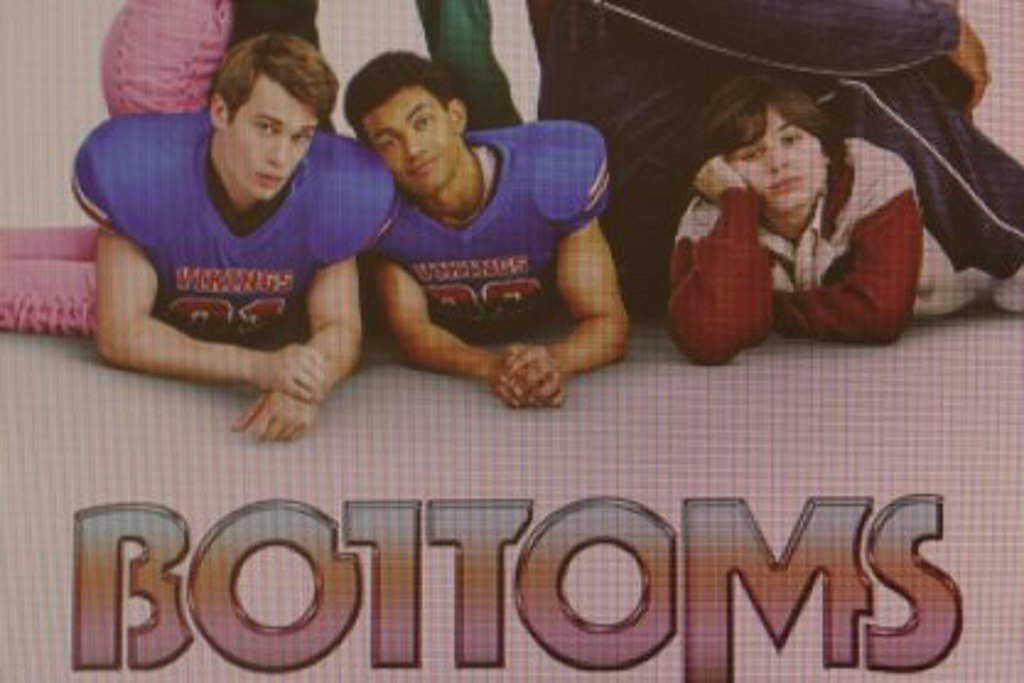The latest comedy from Emma Seligman is a sign of the times and long overdue punching-bag for queer people everywhere to let loose on.
PJ (Rachel Sennott) and Josie (Ayo Edebiri) are the resident outcasts at their school, ostracized from many of their peers due to their queer identity. To avoid expulsion after an incident with their school’s poster boy, Jeff, the two organize a fight club to empower women. PJ states this has the bonus of letting the two become closer to girls they find attractive. The club’s teachings are quickly put to the test, however, when they are faced with increasing threats from men at the school.
If there is one thing that stands out, it’s that the writers of Bottoms are entirely aware of their target audience. Ranging from the occasional “slay queen” sprinkled into the script to the shameless sexual desires of the protagonist, Seligman has helped prove what can be done when queer artists are given platforms to produce art that is relevant to them. Characters like the ones in Bottoms work due to their creation from queer experience itself, not the studying of queerness as an external topic of research.
This issue can be seen across media as stereotypes become sources of representation – or misrepresentation – often from the reference of heterosexuality, painting stereotypes grounded in norms of femininity and masculinity. Seligman liberates the film from these, instead using her own queerness as a lens to paint the extremes of heterosexuality and the sheer ludicrousness of some of the culture surrounding it.
Sennott, who also has writing credits on the film, is an absolute powerhouse. She commands every scene that features her and gives the role of PJ her dramatic all. Her approach to acting is refreshing to watch. She feels committed to the messiest aspects of her characters. Sennott had her breakout role in Seligman’s debut film Shiva Baby, where she captured the sinking feeling of nearly everything going wrong in a social event as her character spirals into problematic situations. Sennott has also become known for her supporting roles in HBO’s The Idol and Bodies Bodies Bodies. Her lead role in Bottoms cements her status as a noteworthy rising star in entertainment.
Edebiri’s performance as Josie is endearing and equally frustrating in all the right ways. Her excessive overthinking and cautionary outlook on being gay in high school warrants a pep talk from the viewers. Yet, to similar audience members, watching her character evolve feels like reflecting on all the missed opportunities queer people may have had in high school. As a character, Josie carries the frustrations of queer youth on her back, swaying between reluctance to speak out and resentment from that same reluctance. It’s a believable struggle youth everywhere may relate to, but one that LGBTQ+ youth may particularly resonate with.
Bottoms also succeeds in its maximalist satirization of the standard high school film for teens. The blunt profanity from teachers directed at students and the extravagant cult-like behaviour around the school’s football team confirm that the film is by no means seeking to create an accurate depiction of the high school social hierarchy. The suffocating amplification of these aspects is meant to reflect the sheer weight of experiencing heteronormativity as a queer youth in high school.
The plot’s fundamental outline is nothing particularly unfamiliar to teen comedies. Seligman’s decision to turn this conventional structure on its head with two believably flawed queer protagonists is a long overdue choice in film. The long wait ended with Bottoms, which is essentially a parodied high school rendition of Fight Club that makes the homoerotic undertones of David Fincher’s film explicit.
Contrary to its name, Bottoms is a demonstration of queer filmmaking finishing on top. It’s narratively simple yet boundlessly witty, relatable and intelligent. Regardless of where the ever-changing tides of the film industry guide the needle, Bottoms make sure to leave its mark and will serve as a reference point for future independent queer filmmakers.

